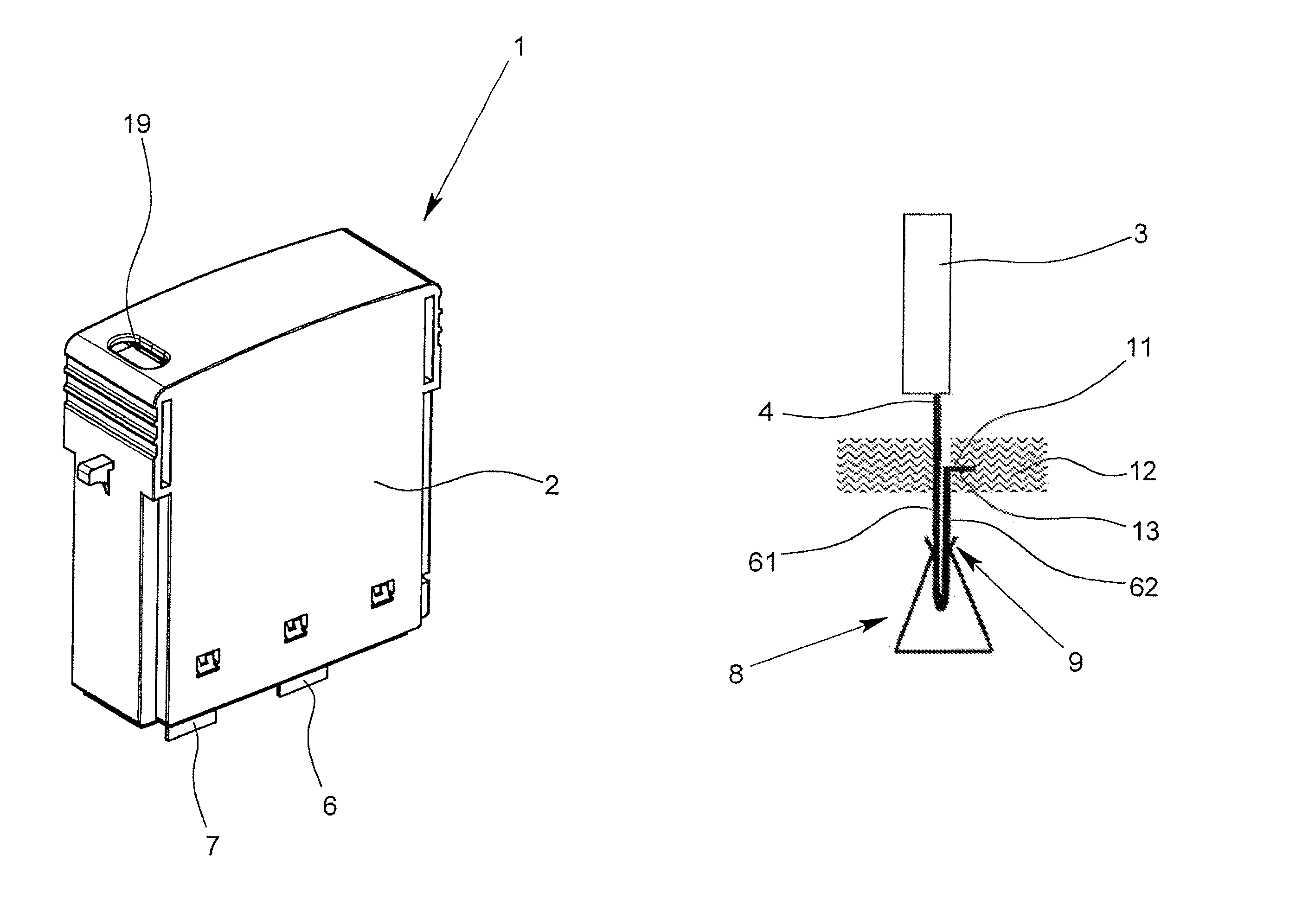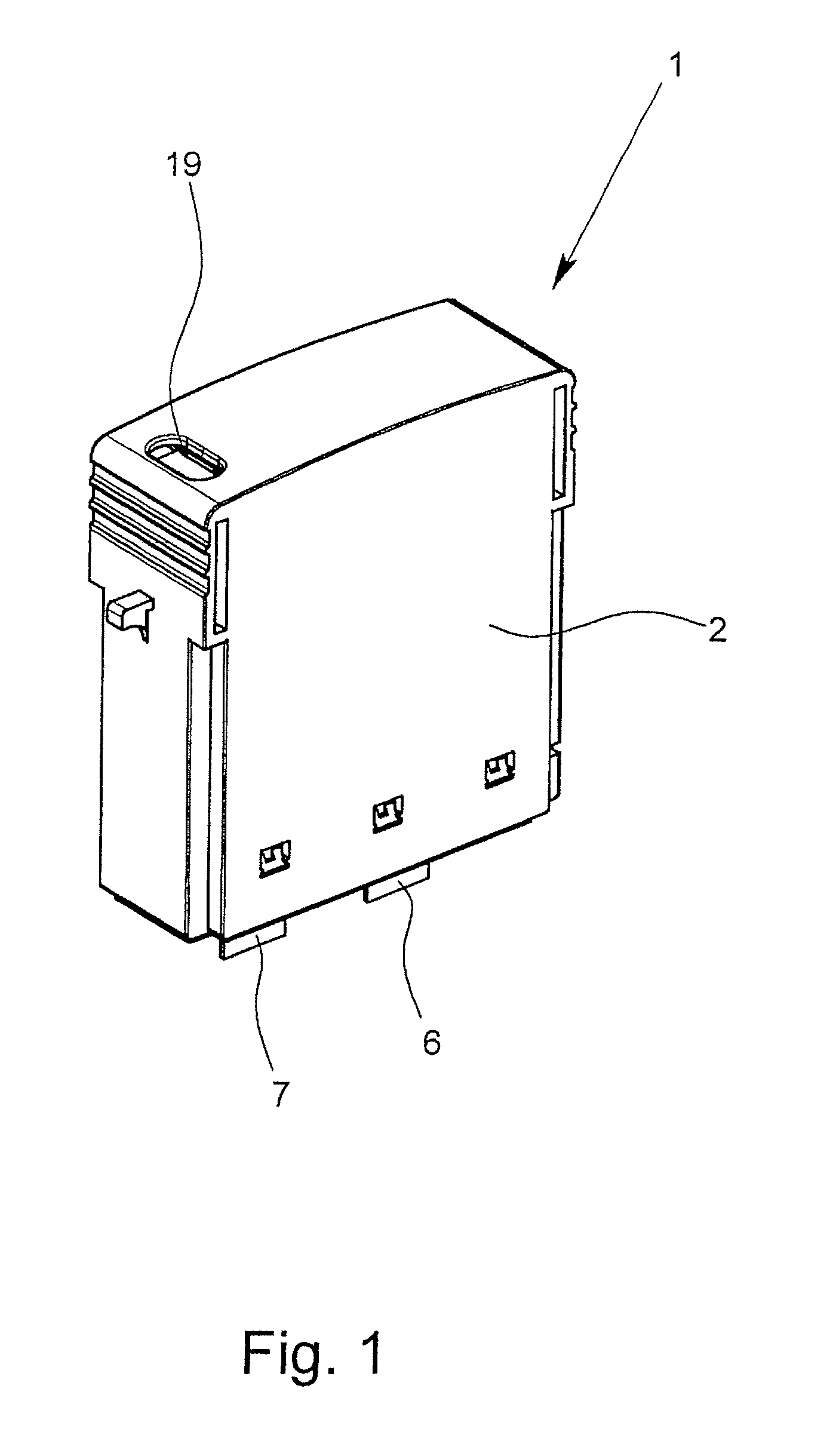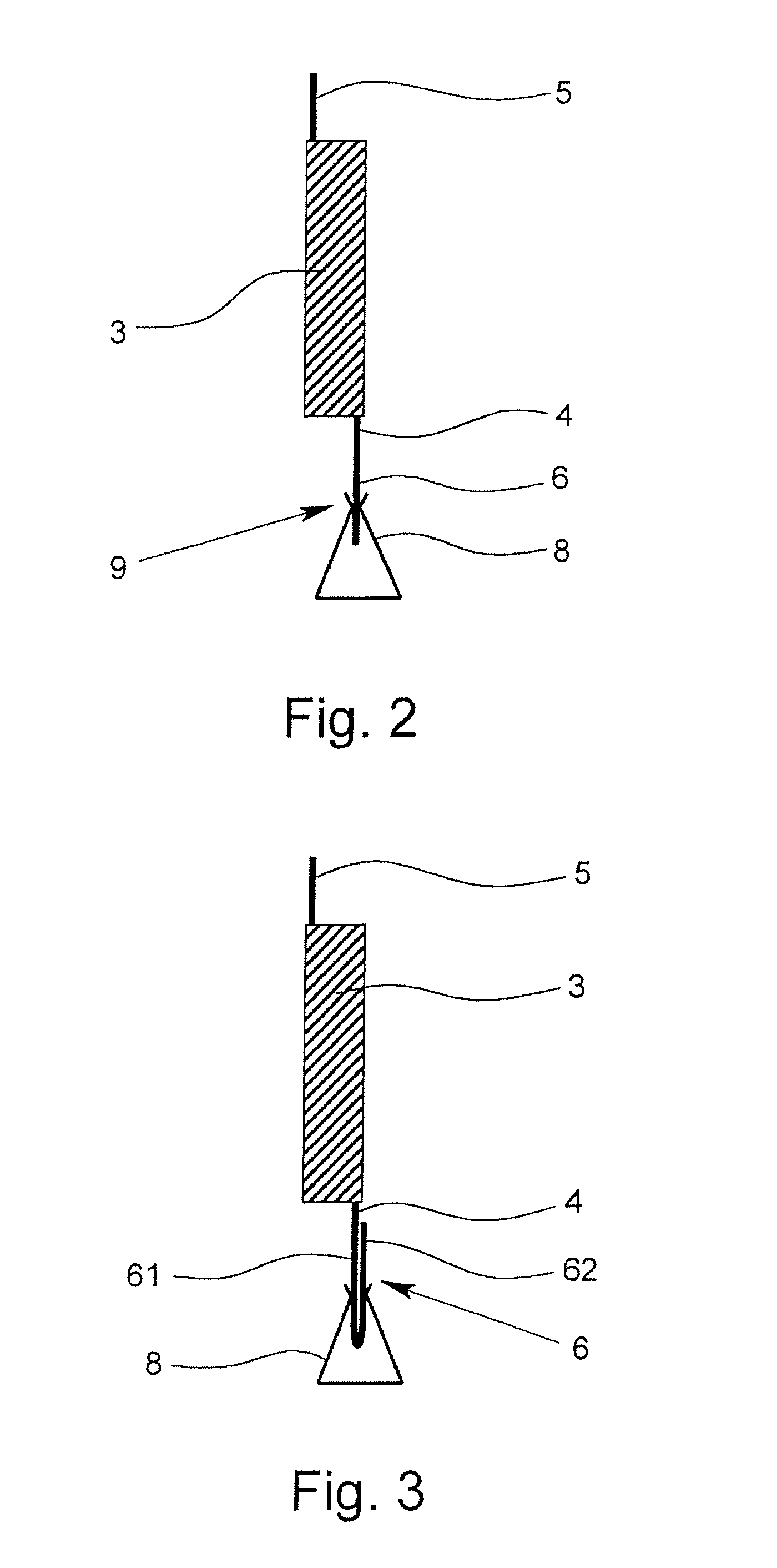Overvoltage protection element
a protection element and overvoltage protection technology, applied in the direction of overvoltage protection resistors, emergency protection arrangements for limiting excess voltage/current, overvoltage protection resistors, etc., can solve the problem of deterioration of the plug-in electrical connection between the overvoltage protection element and the bottom part of the device, and achieve the effect of more convenient production and more economic
- Summary
- Abstract
- Description
- Claims
- Application Information
AI Technical Summary
Benefits of technology
Problems solved by technology
Method used
Image
Examples
Embodiment Construction
[0028]In FIG. 1, an overvoltage protection element 1 has a housing 2, there being an overvoltage limiting component in the housing 2. In the illustrated exemplary embodiments, the overvoltage limiting component is a varistor 3; alternatively, the overvoltage limiting component can also be formed by several varistors connected in parallel, especially a double varistor. Likewise, the overvoltage limiting component can also be a gas-filled surge arrester.
[0029]The two poles of the varistor 3 are each connected to a terminal lug 4, 5 in an electrically conductive manner, especially soldered or welded. The protective element 1 made as a protective plug moreover has two connecting elements 6, 7 which are made as plug-in contacts and which project out of the housing 2 through corresponding openings on the bottom of the overvoltage protection element 1. The plug-shaped connecting elements 6, 7 can be inserted into the corresponding sockets 8 of the bottom part of the device which is not sho...
PUM
 Login to View More
Login to View More Abstract
Description
Claims
Application Information
 Login to View More
Login to View More - R&D
- Intellectual Property
- Life Sciences
- Materials
- Tech Scout
- Unparalleled Data Quality
- Higher Quality Content
- 60% Fewer Hallucinations
Browse by: Latest US Patents, China's latest patents, Technical Efficacy Thesaurus, Application Domain, Technology Topic, Popular Technical Reports.
© 2025 PatSnap. All rights reserved.Legal|Privacy policy|Modern Slavery Act Transparency Statement|Sitemap|About US| Contact US: help@patsnap.com



